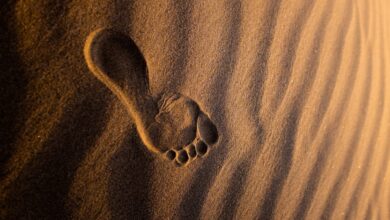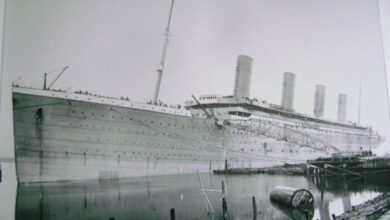The Camino de Santiago
The Camino de Santiago: A Historical Pilgrimage Revived
The Camino de Santiago, known in English as the Way of St. James, is a large network of ancient pilgrim routes stretching across Europe and coming together at the tomb of St. James in Santiago de Compostela in northwestern Spain.
For over 1000 years, making a pilgrimage to the Cathedral of Santiago de Compostela has been one of the most important Christian pilgrimages a person can make.
What began as a medieval religious pilgrimage has transformed into a modern cultural phenomenon that attracts people from around the world.
A Pilgrimage Network Born in the Middle Ages
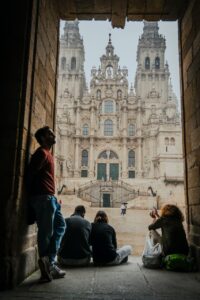 The pilgrimage to Santiago de Compostela traces back to the year 813 AD when a hermit claimed to have unearthed the tomb of the apostle St. James in a Galician forest. Saint James was one of the 12 apostles of Jesus and the patron saint of Spain. This marked one of the most important pilgrimage discoveries in medieval Christianity.
The pilgrimage to Santiago de Compostela traces back to the year 813 AD when a hermit claimed to have unearthed the tomb of the apostle St. James in a Galician forest. Saint James was one of the 12 apostles of Jesus and the patron saint of Spain. This marked one of the most important pilgrimage discoveries in medieval Christianity.
The discovery turned the small town of Santiago de Compostela into a bustling epicenter for Christian pilgrims for centuries to come. By the 12th century, hundreds of thousands were making the trek each year from across Europe. Several major routes emerged over time, creating an intricate network of pilgrimage pathways leading to Santiago.
Why Did Medieval Pilgrims Journey to Santiago?
In the Middle Ages, Christian pilgrimages were extremely popular for several reasons:
- They were seen as a way to atone for one’s sins and achieve forgiveness and salvation. Making a long, difficult journey was a test of faith.
- Saints and martyrs were believed to hold miraculous powers. Pilgrims would come to touch their remains, pray at their tombs, and seek blessings and healing.
- It satisfied the medieval Christian desire to get closer to God and the holy figures of Christianity.
- The trips gave pilgrims adventures, broke up monotonous daily life, and satisfied a longing for travel.
- They allowed people from across Christendom to bond over a shared experience. All pilgrims were seen as equals on the journey.
- It was a drastic form of indulgence, reducing your time in purgatory. The longer the journey, the more sins are atoned for.
This combination of pious religious devotion and wanderlust led multitudes to undertake dangerous trips across Europe to reach Santiago de Compostela.
The Medieval Pilgrim Experience on the Camino
For medieval pilgrims, the Camino was an arduous months-long journey, full of discomfort and hazards. Most European pilgrims took the French Way starting from France. This 500-mile trek could take up to three months.
Pilgrims traveled light, carrying only basic supplies like clothing, bedding, and food. Shelter consisted of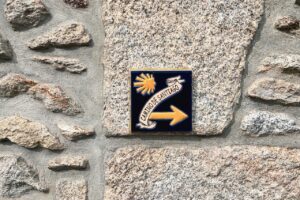 monasteries, hospitals, and basic refuges. Criminals and wild animals lurked throughout the routes.
monasteries, hospitals, and basic refuges. Criminals and wild animals lurked throughout the routes.
Still, hardships were seen as part of the determination to reach their Christian quest. Pilgrims took consolation in bonding with their fellow travelers and the kindness of locals. Arrival in Santiago brought relief and a deep sense of accomplishment.
After praying at the cathedral, pilgrims would also visit the Portico de la Gloria, a 12th-century Romanesque portico covered in elaborately carved figures of saints, apostles, and scenes of the Apocalypse. This masterpiece let medieval pilgrims feel immersed in Biblical images.
The Camino in Modern Times
By the 16th century, Christian pilgrimages declined with the emergence of the Renaissance and the Reformation. The Camino de Santiago fell out of fashion for over 400 years. By the 20th century, only a few hundred pilgrims arrived annually.
But starting in the 1980s, the Camino began to draw renewed intrigue. It saw a revival thanks to several factors:
- Promotion by public institutions in Spain and Europe
- Secular interest in the route as a hiking trail and cultural experience
- New histories and guides published about the Camino
- Peace and infrastructure in Western Europe that allowed ease of travel
- Seekers of spiritual meaning outside traditional religion
Today the Camino sees over 300,000 pilgrims annually from all backgrounds and over 50 countries. While many still do it for religious reasons, most are drawn by the physical challenge, cultural immersion, and spiritual meaning apart from religion.
The routes to Santiago form an interconnected network accessible to people of all ages and abilities. Popular start points besides the French Way include the Portuguese Coastal Route, the Northern Route from the Basque Country, and English routes.
The Modern Pilgrim Experience
While still a serious physical challenge, modern pilgrims experience an easier journey than their medieval counterparts thanks to improved infrastructure. Pilgrims mostly stay in inexpensive hostels called albergues or refugios specifically for Camino travelers. These hostels provide beds, showers, and cooking facilities at each night’s stopping point.
The routes also feature Spanish paradores, private guesthouses, monasteries, and hotels for those seeking more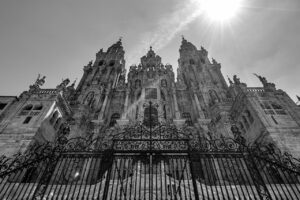 amenities. Pilgrims can arrange baggage transfer between stops, so they only need to carry a single backpack. Waymarkers and detailed guidebooks ease navigation.
amenities. Pilgrims can arrange baggage transfer between stops, so they only need to carry a single backpack. Waymarkers and detailed guidebooks ease navigation.
While pilgrims still mingle and bond with their international comrades, there is more solitude on the Camino today. This allows reflection on life during hours of walking each day. Reaching Santiago brings euphoria, accomplishment, and wistfulness at the journey’s end.
Obtaining the Compostela Certificate
Pilgrims finishing the Camino can obtain a special document of accomplishment called the Compostela from the Pilgrim’s Office in Santiago. To qualify, walkers need to traverse 100 km on foot or 200 km by bicycle along one of the official routes. They must also fill out paperwork stating they made the journey for “religious or spiritual reasons.”
While the phrasing is vague, it signifies the inward quest that defines modern Camino pilgrims. Collecting stamps along the route in a credencial or “pilgrim’s passport” serves as proof when requesting the Compostela.
For non-spiritual walkers, there is the alternative Fisterra Certificate, named after Cape Finisterre on the Galician coast. Overall, the certificates acknowledge the Camino as more than just a long hike. Completing it represents a journey of self-discovery.
Why Hike the Camino de Santiago Today?
The Camino de Santiago attracts over 300,000 pilgrims annually from diverse backgrounds and over 50 different countries.
With so many ancient pilgrim routes to choose from around the world, what motivates such large numbers to complete this pilgrimage in modern times? There are a variety of compelling reasons that call to people across cultures and creeds.
Seeking Greater Spiritual Meaning
One of the strongest motivators is the desire to find greater spiritual meaning and connection with the divine. While devoted Catholics still undertake the pilgrimage for religious devotion, the spirituality sought on the Camino today is often broader.
Many moderns find organized religion too narrow or dogmatic for their beliefs. Instead, they seek spiritual fulfillment through the act of pilgrimage itself – through the ritual, the journey, the contemplation, and the community. The Camino allows connection with one’s personal beliefs without doctrinal rigidity.
The inward quest for meaning is what earns the Compostela certificate at the journey’s end, regardless of a specific faith. Hiking from dawn to dusk, stripped of technology and distractions, clarifies perspective and values.
Testing Oneself Through Extreme Physicality
Hiking the Camino pushes the body to its limits, testing mental toughness. Walking 12-15 miles or more daily over steep terrain in all weather conditions requires intense physical and mental stamina. Pilgrims gain a sense of accomplishment from proving themselves capable of such an athletic feat.
Yet it is more than just fitness. It represents overcoming perceived limitations, which builds confidence and self-knowledge. It proves that with determination and grit, big goals are possible. The physicality of the Camino serves as a metaphor for life’s big picture.
Pilgrims develop patience, resilience, and trust in their body’s abilities. The Camino represents a personal challenge to achieve mastery over body, mind, and spirit.
Immersing Oneself in History and Culture
The Camino allows pilgrims to immerse themselves in Spanish language, cuisine, architecture, art, and culture as they walk through centuries of history. One can trace Roman antiquities, Moorish influences, Galician traditions, Catholic heritage, and other layers that shaped the Iberian peninsula.
Interacting with other pilgrims from around the world also provides a cultural education. Veteran pilgrims say that “the Camino provides context” – giving perspective on humanity’s place within the sweep of history.
Walking the same paths as millions of pilgrims before connects with those who have gone before over millennia. It satisfies a human longing to be part of a story greater than oneself.
The Camino de Santiago & Reconnecting with Nature
The Camino traverses green countryside, fields, mountains, and forests. Without the distractions of daily life, pilgrims deeply reconnect with nature. The simplicity gives perspective on life’s fundamentals – the body, breath, walking, eating, water, and shelter.
Studies show that immersion in nature has psychological benefits by reducing rumination and lowering stress hormones. The Camino allows pilgrims to unplug from technology and “digital noise” to gain a presence of mind.
Observing nature’s beauty and power fosters gratitude and spiritual connection. For many pilgrims, their most divine experiences come through interactions with the natural world along the Camino.
Undergoing Transformation and Reflection
Many who undertake the Camino do so during major life transitions or times of questioning – graduation, retirement, a relationship ending, career changes, mourning a loss. The rhythm of walking facilitates deep reflection to find direction, meaning, and answers.
With endless time for self-contemplation, inner wisdom surfaces. Mental static fades away, providing clarity. By the journey’s end, pilgrims feel transformed in body, mind, and spirit. They complete the Camino, a different person than when they started.
The Camino de Santiago & Finding Camaraderie and Kindness
Despite language and cultural barriers, friendships form quickly on the Camino de Santiago. Sharing the experience and helping each other fosters connection. Kindness from fellow pilgrims and from Spanish locals restores faith in humanity.
On the Camino, people look out for one another. Experiences of adversity bring people closer together with empathy and compassion.
Veteran pilgrims also share wisdom with newcomers just starting out. The community elevates and inspires every pilgrim to keep moving forward on difficult days. Camaraderie is essential.
Embarking on an Epic Adventure
The Camino represents an adventurous off-the-beaten-path journey across Spain not found on standard tours. Pilgrims trek through little villages lost in time, over rolling hills, deep forests, along golden beaches, into the heart of Spain’s countryside.
The physicality turns the Camino into a heroic quest, especially when enduring discomfort, getting lost, running low on food or water, and pressing through pain. It satisfies a longing for an epic life adventure far from the mundane.
Stories will be etched into memory: stunning vistas, new friendships, hostel mishaps, overcoming challenges. The Camino forms life’s irreplaceable adventures to share.
The Camino de Santiago & Finding Freedom
Everyday routines, job pressures, technology overload, and responsibilities burden modern life. The Camino offers freedom – both external and internal. Externally, days are simplified to walking, eating, and sleeping in nature. Internally, anxiety and mental chatter fade away.
There is liberation in living only in the present moment – not dwelling on the past or future. The “normal” concerns that consume attention no longer seem significant. There is only the freedom of sun on the skin and wind in the hair.
Satisfying a Lifelong Dream
For many, walking the Camino represents the achievement of a lifelong bucket list dream. After years of imagining this legendary pilgrimage, they finally make it a reality. Completing such a momentous goal creates immense satisfaction.
It serves as a reminder that ambitions can be fulfilled with determination. It motivates pilgrims to return home and tackle other “someday” dreams. Completing the Camino emboldens people to envision a grander life.
The Camino de Santiago’s timeless allure speaks to the human spirit’s intrinsic longings. While reasons vary, most pilgrims finish their journey changed in heart, mind, and spirit. They return home enriched with memories to last a lifetime.
Camino de Santiago Routes: An Overview
While the French Way is the most popular route, pilgrims have many different Camino trajectories to choose from today. Major routes include:
- The French Way – Starts from the French border over the Pyrenees. Follows 500 miles through Leon to Santiago. Most history and infrastructure.
- Portuguese Coastal Route – Goes along Portugal’s Atlantic coast from Porto or Lisbon before joining the Spanish routes. More seaside walking.
- Portuguese Interior Route – Starts in Lisbon and crosses rural Portugal to connect with the Spanish Caminos. Hillier terrain.
- Primitive Route – Follows the ancient path leaving Oviedo through Asturias. More challenging hiking with fewer pilgrims.
- Northern Route – Goes through Spain’s Basque Country and green coastline. Rich culture and cuisine.
- Silver Route – Starts in Seville and crosses Extremadura through Roman ruins to the Spanish heartland. Hotter but scenic.
- English Route – Begins in Ferrol or A Coruna in northwest Spain. Gentler terrain near the coast.
Pilgrims can mix and match portions of routes to craft their ideal Camino experience. Those with less time can select legs starting closer to Santiago.
Preparing for a Camino Pilgrimage
While a spontaneous Camino is possible, advance planning makes the experience more enjoyable. Here are some tips:
- Get in shape – Train by hiking with your pack weight. Build the endurance to walk 15+ miles daily.
- Pack light – Pack only essential clothing, toiletries, first aid, and tech. Remember, you must carry everything!
- Book lodging – Reserve your first night’s stay. After that, enjoy flexibility reserving day by day.
- Travel light – Arrange to ship extra luggage ahead so you don’t carry it.
- Break-in boots – Wear hiking boots for several weeks pre-Camino to prevent blisters.
- Learn some Spanish phrases – Hola! Buen camino! Gracias! Knowing the basics helps greatly.
- Review the route – Study guidebooks and maps so you know what to expect each day.
- Pack medical items – Bring bandages, antibiotics, and anti-inflammatory meds in case of injury.
With planning, packing, and training, you’ll be equipped for the Camino adventure of a lifetime!
Why the Camino de Santiago Captivates Modern Travelers?
In an age of convenience, why does this ancient pilgrim route still capture the imagination and hearts of travelers from around the world? The Camino de Santiago holds the magic that enriches life in simple but profound ways:
- It provides life perspective – Daily concerns shrink when focused on reaching a 60-day goal.
- It fosters human connection – Barriers between people dissolve when sharing the journey.
- It enhances appreciation – Modern comforts are missed, provoking gratitude.
- It builds self-knowledge – Facing physical and mental challenges reveals one’s true character.
- It enables contemplation – With everyday noise stripped away, inner thoughts rise to the surface.
- It creates life memories – Completing the Camino forms one of life’s highlights.
The Camino de Santiago refuses to fade precisely because it taps into timeless human desires – for challenge, spirituality, nature, adventure, and companionship. In the end, it remains a pilgrimage all of us can make together.
